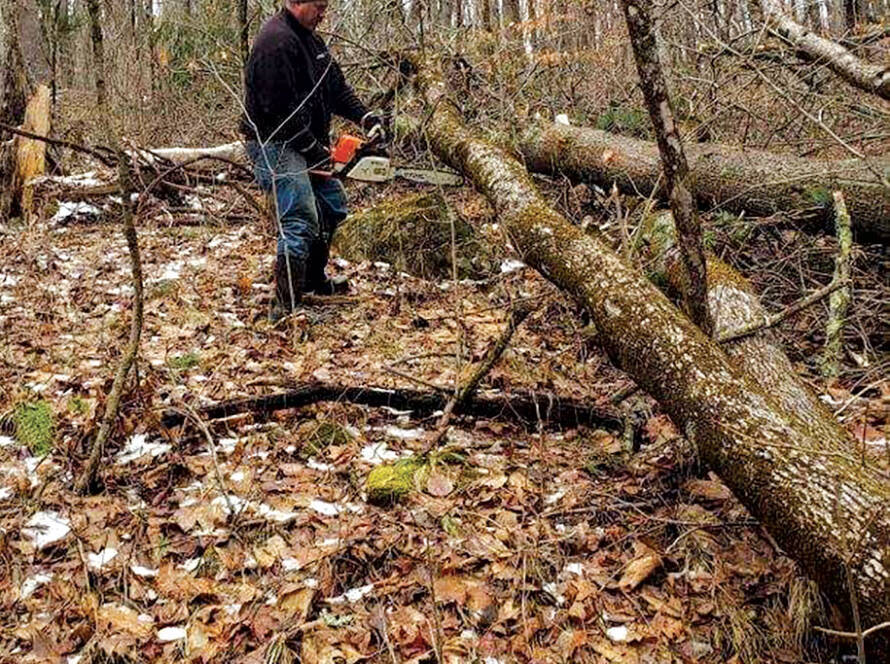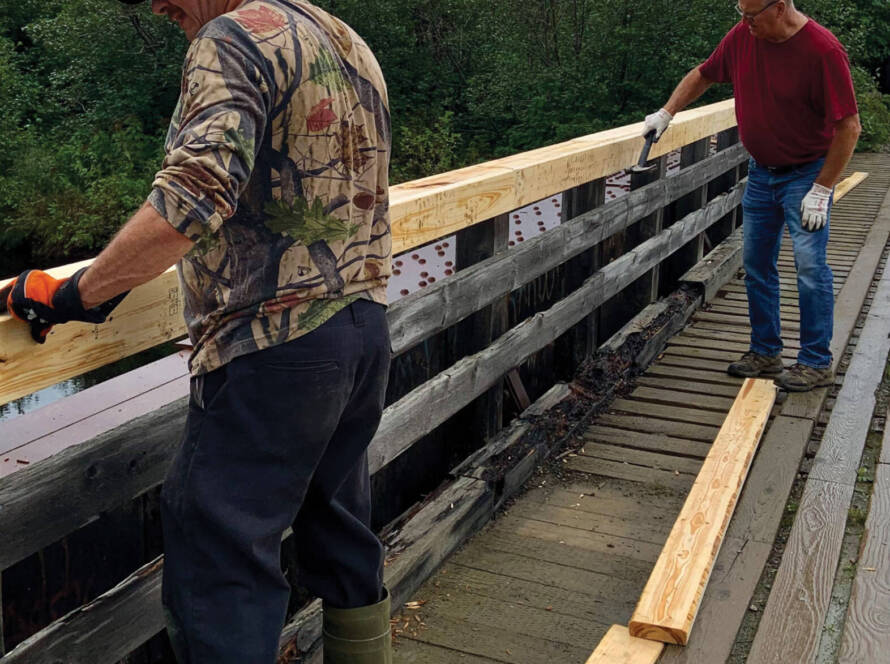Among the many obstacles faced by the Oregon Trail pioneers as they trekked west in their wagon trains were the imposing Blue Mountains. Found in the northeast corner of Oregon, these mountain reach heights of more than 9,000 feet.
Today, a new set of adventurers can be found here. They use motorized sleds to traverse trails in the heart of the Blue Mountains range and they belong to the Tollgate Trailfinders Snowmobile Club, named after a mountain road toll gate set up long ago by one of the area’s earliest settlers.
Just elected to a second two-year term, Brandon Christensen is the president of the Tollgate Trailfinders. Christensen says because the Tollgate Trailfinders’ trail system is located largely within a U.S. Forest Service area (the Umatilla National Forest), club members are able to enjoy a remarkable snowmobiling experience that’s hard to beat.
“It’s beautiful country and there are some spectacular views,” he said. “There’s some great opportunities for some off-trail riding as well. Once they’re in the national forest, we actually encourage people to get off the trail and explore a little bit. There are some canyons to drop into and challenging terrain, if you want to look for it.”
Tollgate Trailfinders currently has 125 family memberships and, according to Christensen, is among the most vibrant snowmobiling clubs in Oregon. “It has been around since the late 1970s, and historically it’s been one of the stronger clubs as far as membership and activity goes in the Oregon State Snowmobile Association,” he said.
Christensen says there are many people who donate their time to support the Tollgate Trailfinders, including 25 volunteers in appointed positions. That includes eight people who comprise the club’s snow grooming team.
“We’re blessed to have a lot of long-term members,” said Christensen. “We have several members of our club who were some of the original groomer drivers back in the late ‘70s and then the ‘80s. They’ve since retired from active grooming, but they’re still paying club members.”
Among the club’s long time members is Bernie Chapman, a Tollgate Trailfinders fixture whose many contributions include helping to get one of the club’s warming shelters – now named after him – built. Christensen fondly recalls a time last year that clearly illustrates Chapman’s strong commitment to his snowmobiling club.
“It was funny, we were cutting firewood this past summer and Bernie showed up. Now Bernie is 94 years old, so we said, ‘Let’s go get you a chair so you sit down and relax,’” said Christensen. “He said, ‘Hell no, I’m here to help,’ so he started hauling in wood and helping us to stack it. It just shows how blessed we are. We have people like him and many others that are willing to help out.”
According to Christensen, some parts of the trail system used by his snowmobiling club are shared with a wide assortment of other outdoors enthusiasts – cross-country skiers and snowshoers in the winter, and people wishing to hike, mountain bike or use a dirt bike or all-terrain vehicle to travel the trails during the summer.
Christensen says while most of the trail system is on national forest land, 10 to 15 percent of the Tollgate Trailfinders’ trails run through private property.
“We want to be respectful to the landowners who are kind enough to let our trail system go through there, and we work really hard with these landowners to make sure that their voices are heard when they have concerns,” he said. “We’ve got lots of signage in that part of our trail system, encouraging people to stay on the trails and just follow the rules.”
Focus on safety
Christensen notes the snow grooming team responsible for setting and maintaining the Tollgate Trailfinders’ trails, led by longtime club member Jess Thompson, has a lot of experience between them.
“Jess has decades of experience and he’s been doing this for the club for many, many years,” he said. “Most of the guys have been doing this for at least 10 years. We have a couple of younger guys who are riding along to do their training, so we’ve got some youth in there too.”
According to Christensen, that training includes a strong emphasis on safety.
“We have on-the-snow training with our newer guys, and they’re required to spend many, many hours with an experienced groomer driver, learning about different snow conditions and how to set the trail and all the different things that that need to be done,” he said. “We cross a highway several times with our groomers and so there’s safety training around that as well.”
The trail system is situated in a mountainous area and that means another safety consideration for groomer operators and snowmobilers is avalanches. Christensen considers the majority of the trails maintained by the Tollgate Trailfinders club to be relatively safe from avalanches, but he says there some areas close by where they pose a more serious threat.
“We have some trail systems nearby that our club does not manage which are definitely in high-risk avalanche territory, and a lot of our members are going to those areas,” he said. “We want people to be safe when they’re riding in the back country.”
For this reason, there is an avalanche awareness course that’s available to Tollgate Trailfinders members. Christensen says the course, which is run by the Wallowa Avalanche Center in Joseph, Ore., will be offered again next season. It is free for club members, although participants are encouraged to provide a donation to help support the non-profit avalanche center.
Tucker Sno-Cat groomers
The Tollgate Trailfinders club uses a pair of Tucker Sno-Cat over-snow vehicles to groom their trails, a 2008 Tucker-Terra and a brand-new 2020 Tucker-Terra that was purchased recently.
“Even though they look similar, our brand-new Tucker requires a little more training because there’s quite a bit more technology built into that machine than our ‘08 Tucker,” said Christensen, adding the club’s entire snow grooming team was able to tour the Tucker Sno-Cat factory in Medford, Ore., last fall.
“Tucker has been a great, great partner of ours and has given us a tremendous amount of support,” he said. “They’re an Oregon-based company, so we’re happy to support them and keep people working in our great state of Oregon.”
Christensen says his club’s groomer operators are out on the trails on a weekly basis during the snowmobiling season, which traditionally lasts from the beginning of December to the end of March, but due to a weather pattern shift in recent years is now often starting and ending later.
“Depending on the weather, we would like to be out there three, four days a week,” he said. “But the weather has been a little warm the last few weeks and so it’s been more like one or two days a week. It’s kind of up to Mother Nature.”
Christensen says when warm weather leads to wet snow, it’s harder for the groomer operators to set up the trails properly so the snow doesn’t wash out and form washboards that are difficult to snowmobile over.
He adds another issue for the club’s groomer drivers is when there’s too much snow, like a time this past January when it snowed heavily for almost a week, covering the trails with more than six feet of snow.
Christensen notes that for powder hounds like himself, the snowmobiling was amazing and fun afterwards, but when you’re grooming trails, “dealing with all that snow can be a hardship. “Our No. 1 challenge is the weather,” he said. “Mother Nature is going to throw at us whatever she wants.”

![[image placeholder]](https://www.snowopsmag.com/wp-content/uploads/2025/05/placeholder@1x.png)
